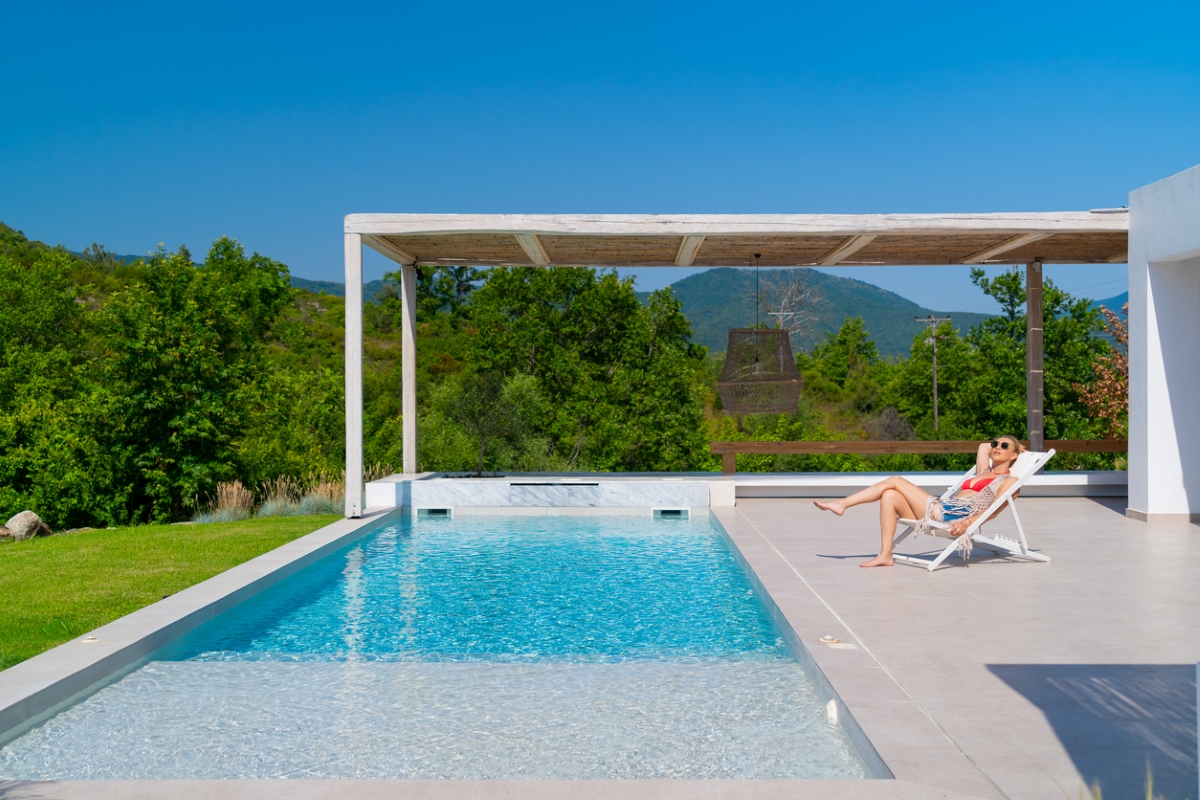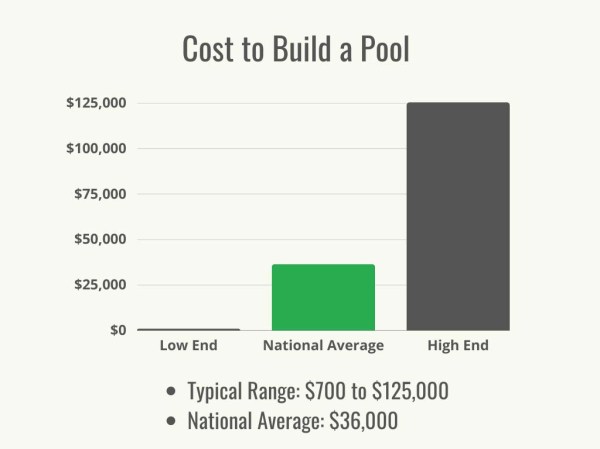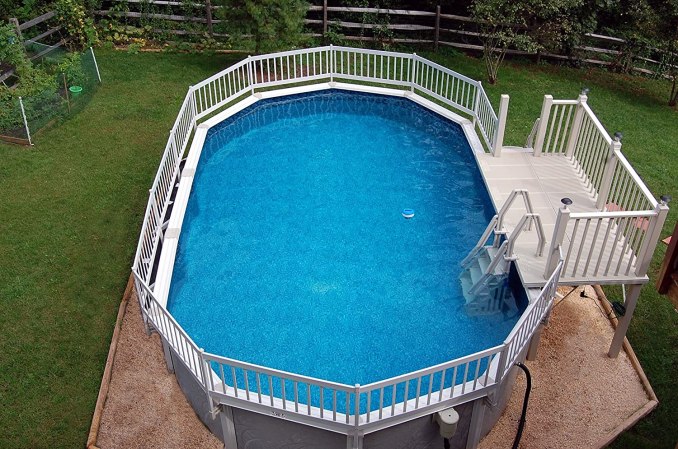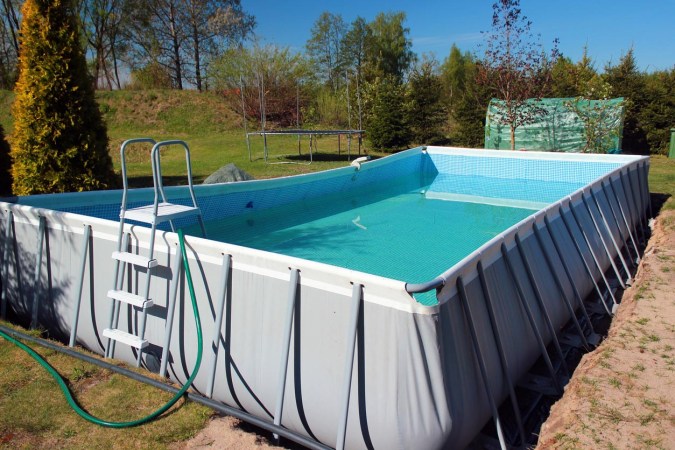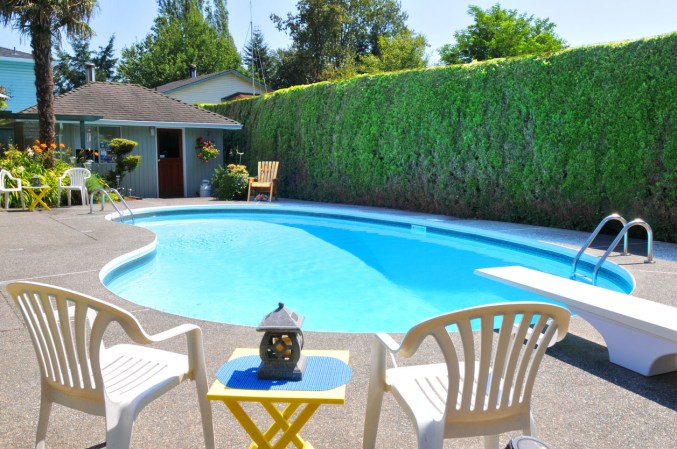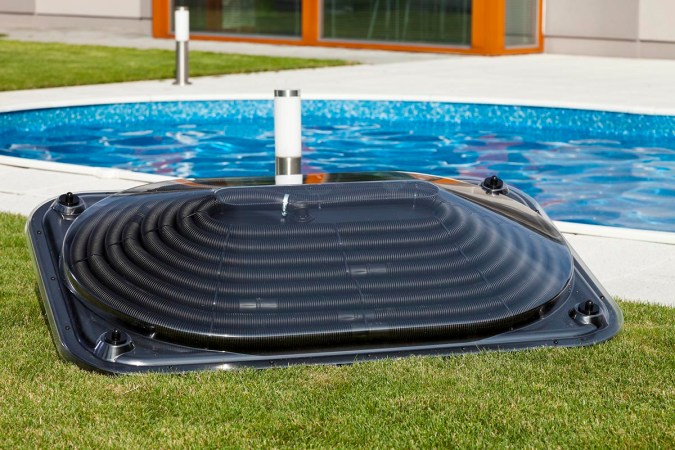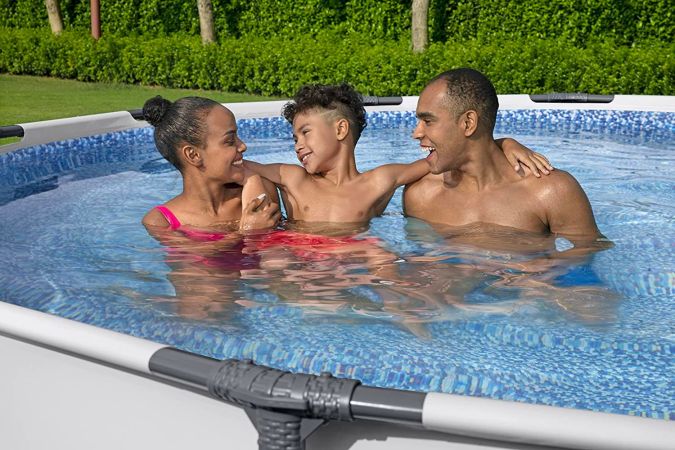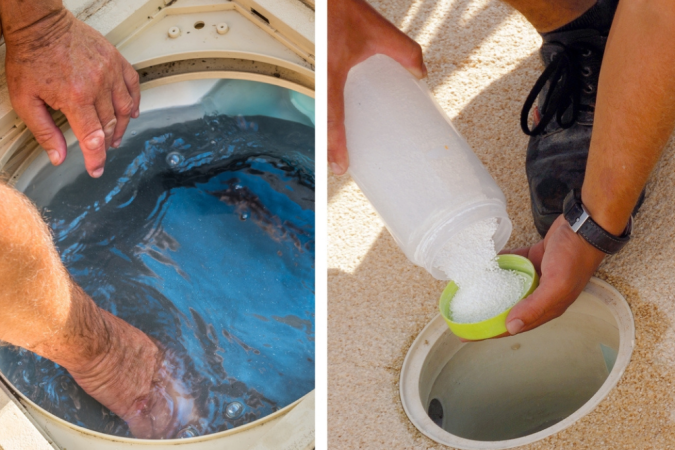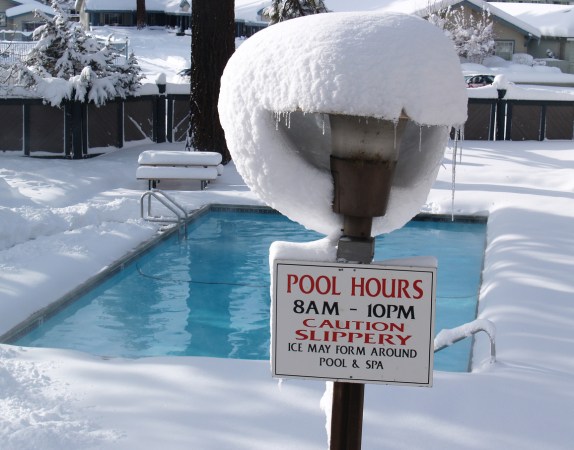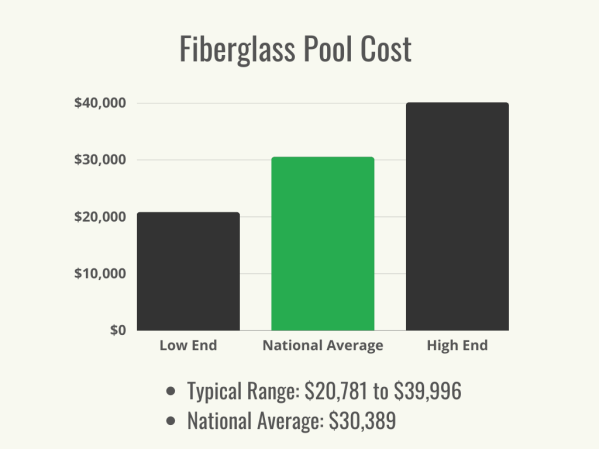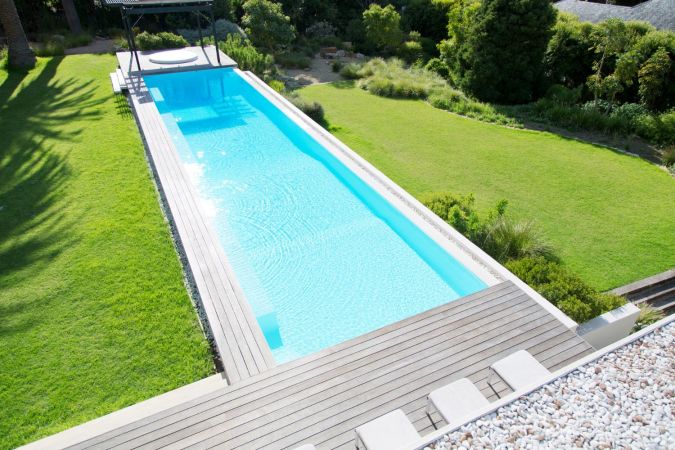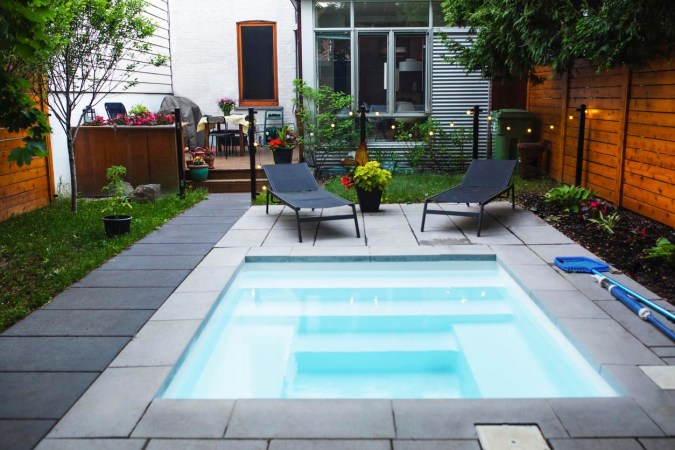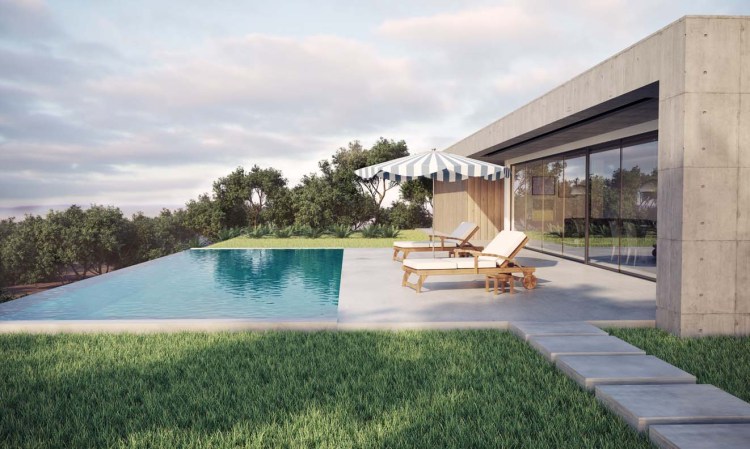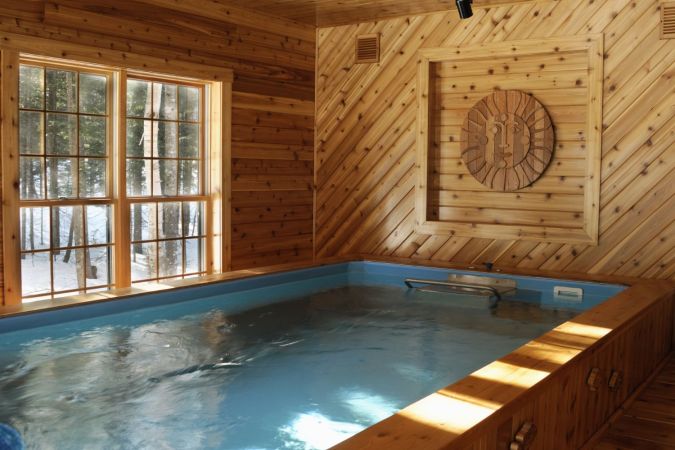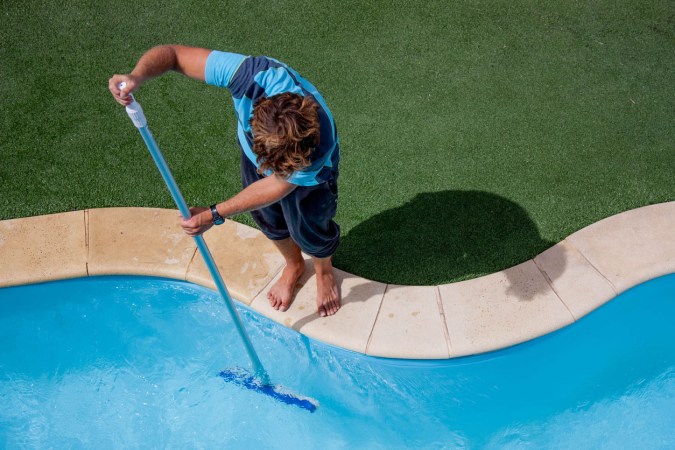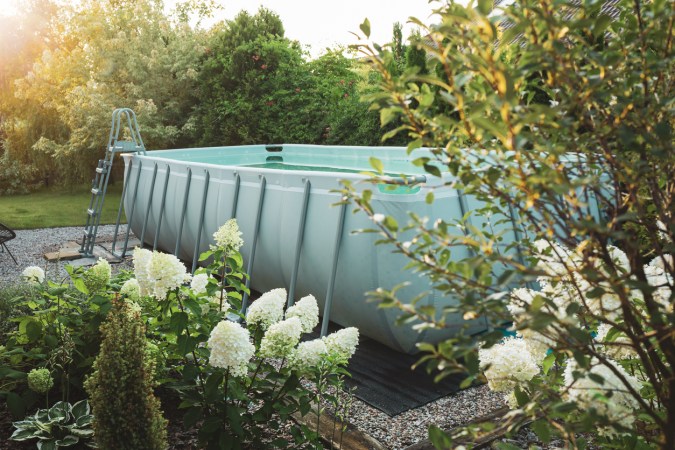We may earn revenue from the products available on this page and participate in affiliate programs. Learn More ›
Have you finally decided to take the plunge—pun intended—and add a pool to your property? If so, you have a few big decisions to make before you can start thinking about contacting one of the best pool installation companies. Most importantly, you’ll need to choose which of the various types of pools you want for your home. Are you looking for a backyard swimming pool? Do you have the space to install an indoor pool? Do you want a kiddie pool for the little ones, or are you looking to swim laps each morning before work? Read on to learn more about the different pool types to help you decide which will be the best fit for your specific needs.
1. Above-Ground Pools
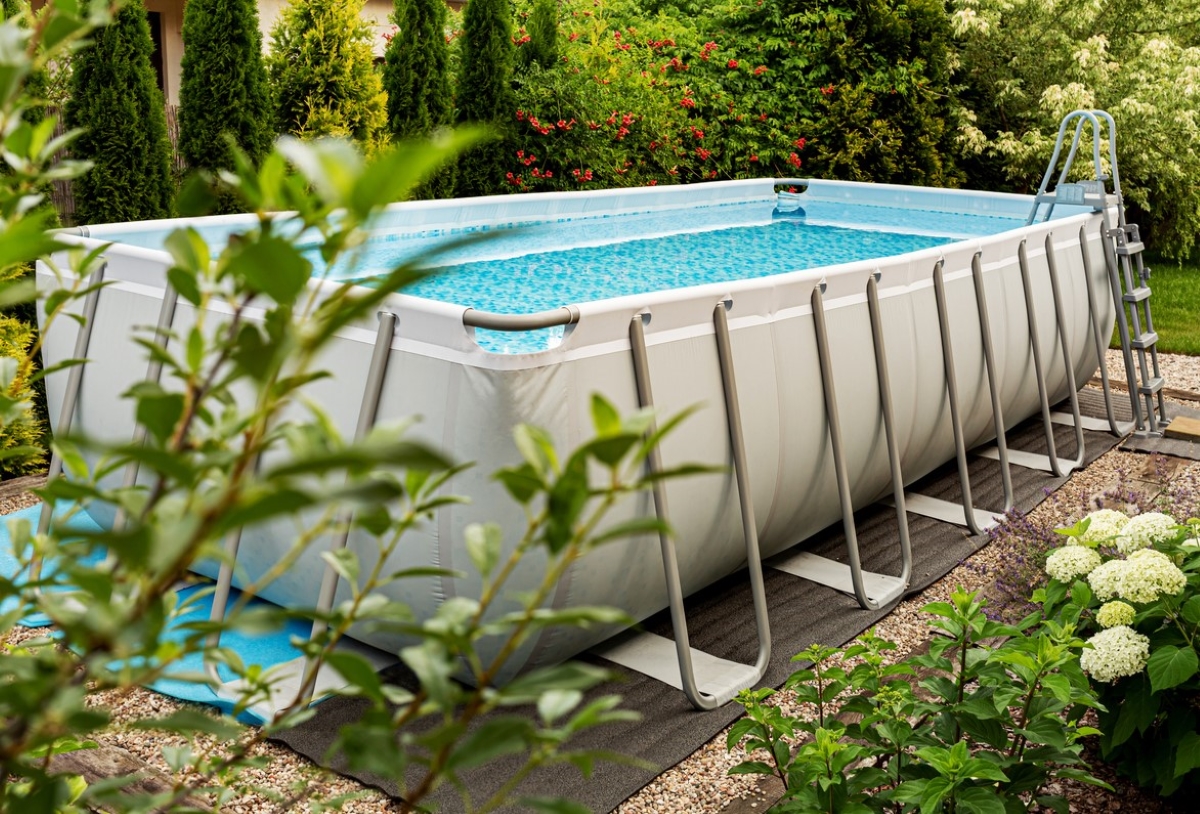
While there are a few different types of above-ground pools, they all share something in common. They are installed above the ground and require less landscaping and excavation work than is necessary for putting in an in-ground pool. Because of this, the cost of installation is also lower than that of in-ground options. Above-ground pool maintenance will be similar to what is needed for in-ground pools, as you’ll still need to balance pH and chlorine levels, keep the water free of debris, and more.
Some see above-ground pools as a safer option for homes with young children. The entrance to the pool is elevated, which may make it more difficult for a small child to access the water. However, as the United States Consumer Product Safety Commission advises, children should never be left unattended around any pools.
Inflatable Pools
Rafi Friedman, president of Coastal Luxury Outdoors, says, “Inflatable pools are a fun, flexible, low-cost option if you only want to set up a pool occasionally.” They are relatively easy to blow up and are easy to move to different areas of the yard or even take to another location. If you need your yard clear for a gathering or just want more space for the kids to run around, you can drain the pool and store it. Friedman notes that there are some downsides to getting an inflatable pool as well. He shares, “they really aren’t made to last and tend to waste a lot of water with constant refilling and emptying.”
Plastic and Metal Frame Pools
”If you’re going to get an above-ground pool, a plastic liner with a metal frame is the industry standard,” says Friedman. These models can be left out year-round in warmer climates or drained and taken apart during the winter in colder parts of the country. If you live in an area with a colder climate during the winter, consider a soft-sided above-ground pool that will be easier to store during the off-season.
You can expect to spend between $1,850 and $5,000 for a plastic or metal frame pool, which is significantly less than you’d spend to have an in-ground pool installed. And, as Friedman points out, above-ground pools “can be quite attractive with elevated decks around them, especially in yards with large slopes.” Just remember, having an elevated deck installed around your pool will cost extra (up to $20,000 or so total). However, an elevated deck isn’t necessary, so you could skip it to keep costs down.
2. In-Ground Pools
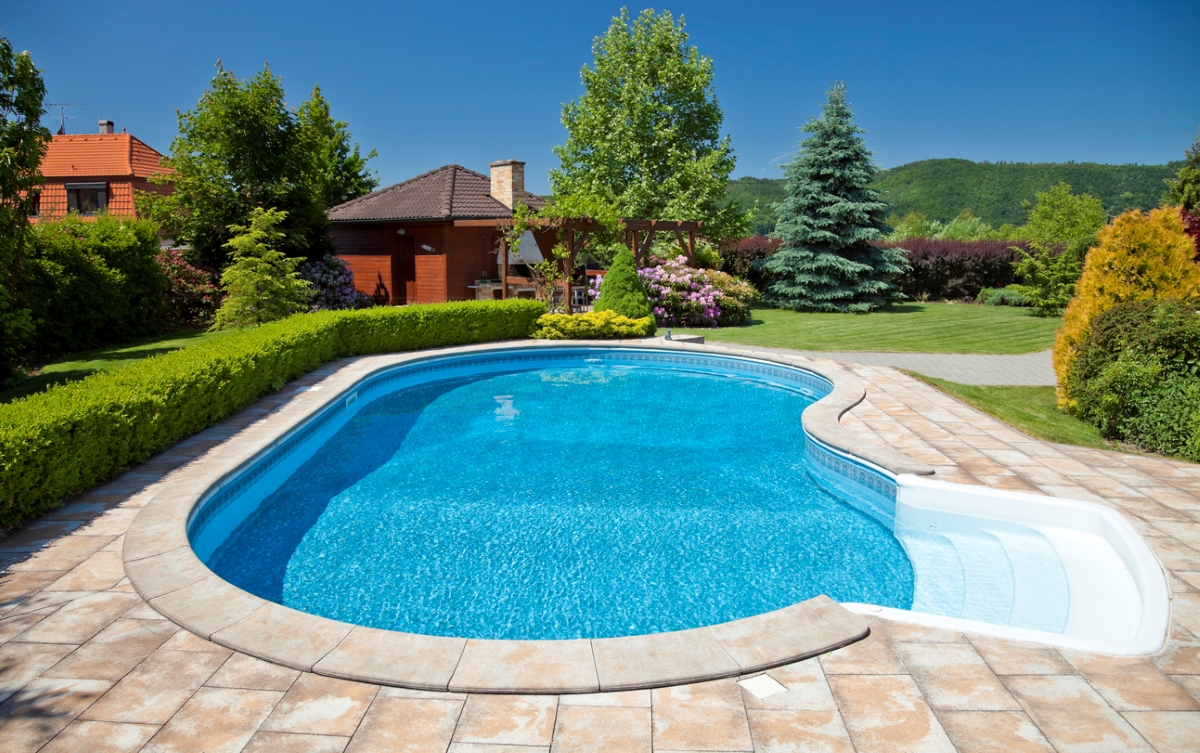
While above-ground pools can be drained and disassembled to move to storage, an inground pool is a permanent fixture. The ground must be excavated to create the opening for the pool. There are different types of inground pools, each offering its own set of pros and cons, which could determine the best choice for your yard.
Fiberglass Pools
Unlike some other in-ground pools that are constructed on the property, fiberglass pools arrive ready to install. The body of the pool is lowered into the excavated hole using a crane. However, a fiberglass inground pool is only a suitable option for those looking for a smaller swimming hole. To avoid surpassing the oversize limits for transportation via truck, these pools cannot be wider than 16 feet.
Fiberglass pools are a relatively expensive option, costing up to $35,000 or more. However, after the initial investment, you can expect your maintenance costs to be low. Algae is less likely to grow on their smoother surface, meaning you won’t need to spend as much on chemicals to treat the water. Their increased flexibility also makes them a popular choice in areas of the country where earthquakes are more likely to strike.
Concrete Pools
While a concrete pool will require a large upfront investment—typically starting around $50,000—it is also likely to last longer than other in-ground options. Concrete pools offer nearly limitless customization options. The pool builder will pour the concrete directly into the excavated ground, allowing you to choose from different layouts and shapes.
The surface of these pools is porous, which can encourage more algae growth. This will require more chemicals to treat the water, resulting in increased maintenance costs. Because the concrete surface degrades over time, you’ll also need to budget to resurface the pool every 10 to 15 years. Friedman says, “Ideally, a concrete pool should have a large concrete pad or patio around it to fully secure its foundation and keep it stable for the long term.” This is an additional expense that you’ll also want to budget for.
Vinyl Pools
If you want a more affordable in-ground option, consider a vinyl pool. These models consist of a vinyl liner that is installed in a plastic or metal frame that sits over a concrete foundation. Installation costs about $30,000, and you’ll be able to customize the size and shape to match your yard and vision.
Vinyl is also more resistant to the growth of algae than concrete, which can reduce your yearly output on filters and chemicals to treat the water. However, vinyl is not as durable or long-lasting as some other materials. The liner will need to be replaced every 5 to 15 years.
3. Lap Pools
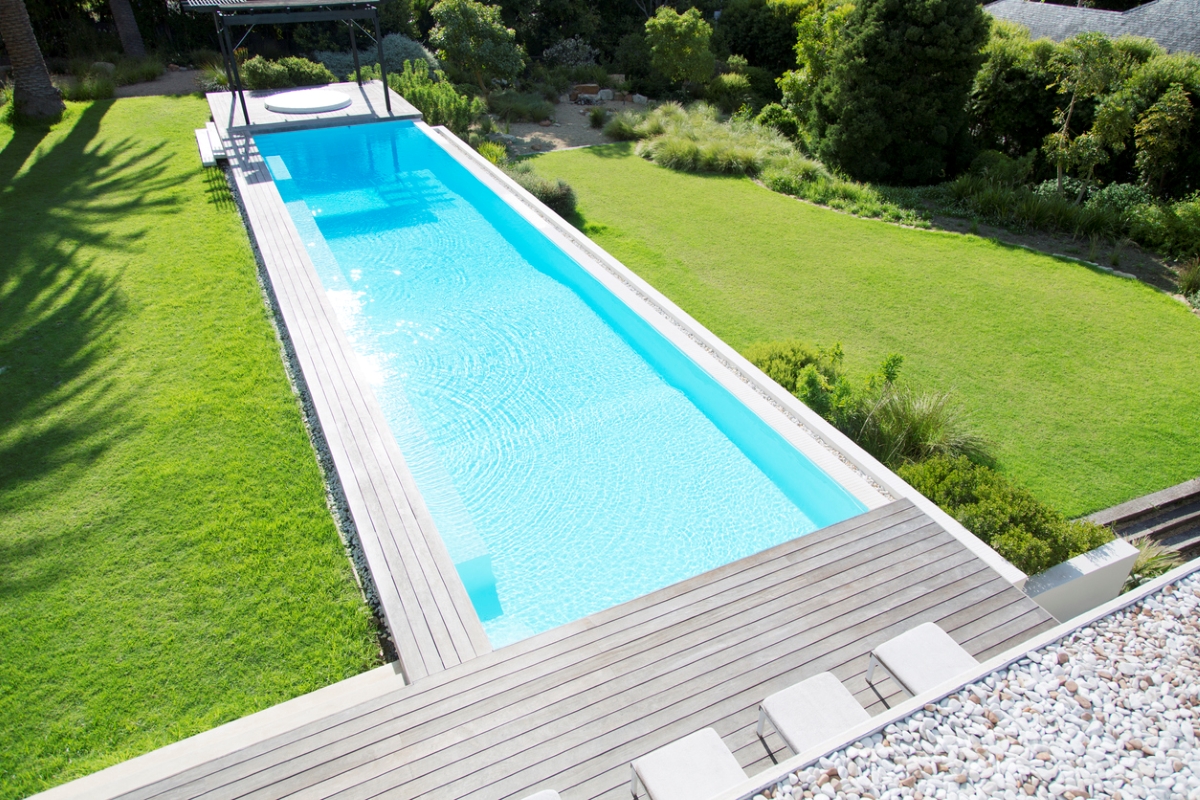
A lap pool, which may be installed in-ground or above-ground, is long and narrow. These pools for swimming laps tend to be on the shallower side and aren’t typically paired with features, such as a diving board or water slide. They may be a good choice for those looking for a pool to use primarily for exercising, but not such a good option for those who want a kiddie pool for playing and jumping around.
While a full “lap” is 25 meters, many backyard lap pools are about half this size, or around 40 feet. Their design is also narrower than that of most leisure pools, which could make them a better fit for some yards. However, it is important to note that the cost to install a lap pool won’t be significantly less than other standard options due to the necessary labor. The national average installation cost is $44,000.
4. Infinity Pools
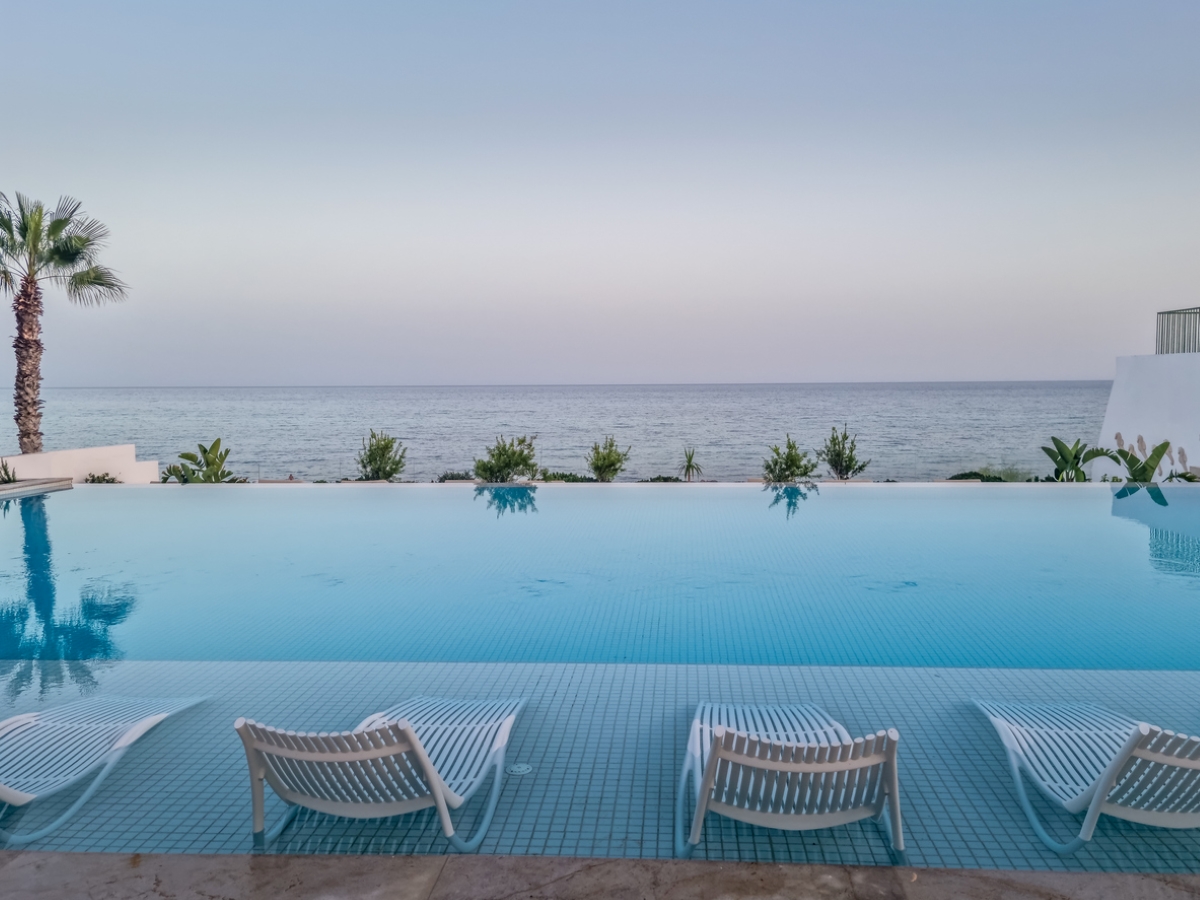
Consider adding an infinity pool to enhance the overall aesthetic appeal of your backyard. If you haven’t heard of this pool type, you may be asking, “What is an infinity pool?” Infinity pools are designed to trick the eye into perceiving that the water is cascading over one edge of the pool, much like a waterfall. Infinity pools, which may also be referred to as zero edge, vanishing edge, or disappearing edge pools, are a popular, yet expensive, pick for yards that feature a drop-off at the edge of the property to enhance the illusion of the “falling” water. The national average cost to install an infinity pool is around $80,000.
5. Indoor Pools
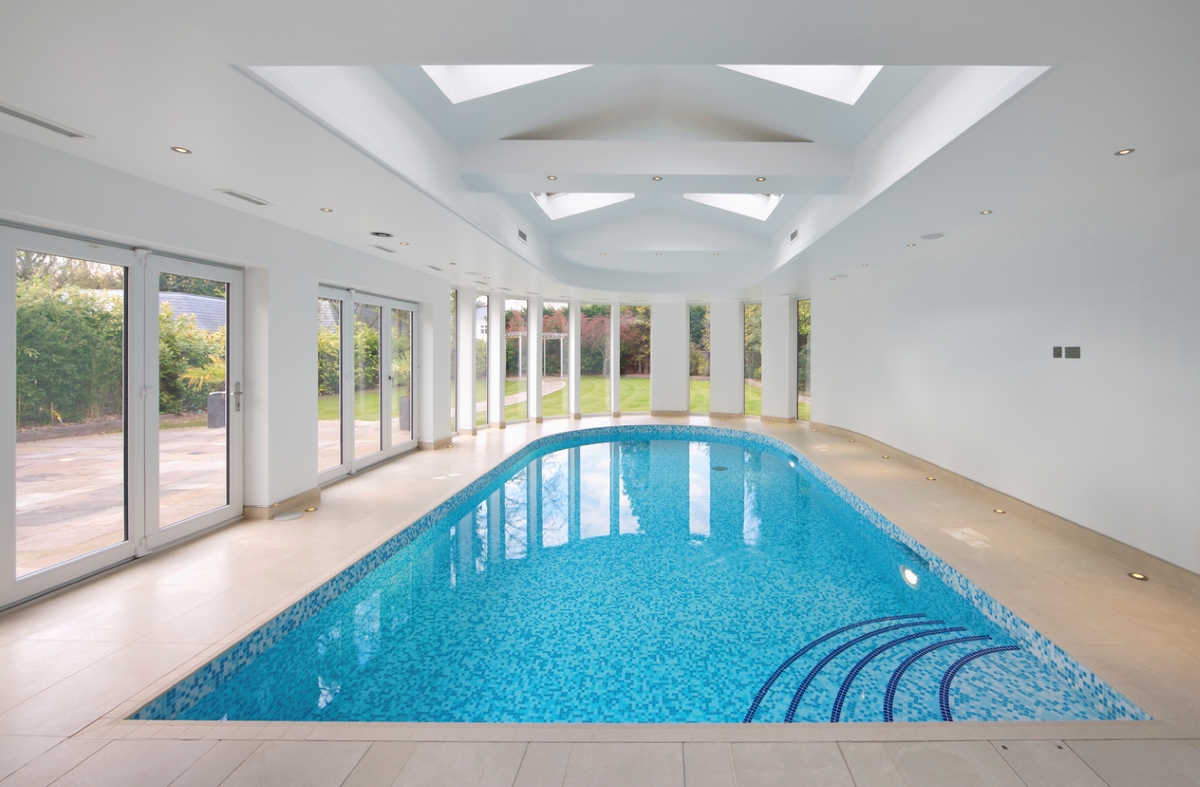
As you can probably guess based on their name, indoor pools are installed inside a home or inside an enclosed patio or sunroom. While an outside pool can’t be used year-round in many climates, an indoor one can. They may be a better option for those who live in colder climates and want to be able to maximize the use of their pool.
You can choose from fiberglass, vinyl, or concrete pool types (the same main options available for in-ground outdoor pools). However, when considering installation costs, remember that you may also need to build a glass enclosure for the pool, which could cost several thousands dollars. However, heating costs will be lower for indoor pools and less cleaning will be required to remove debris from them.
6. Plunge Pools
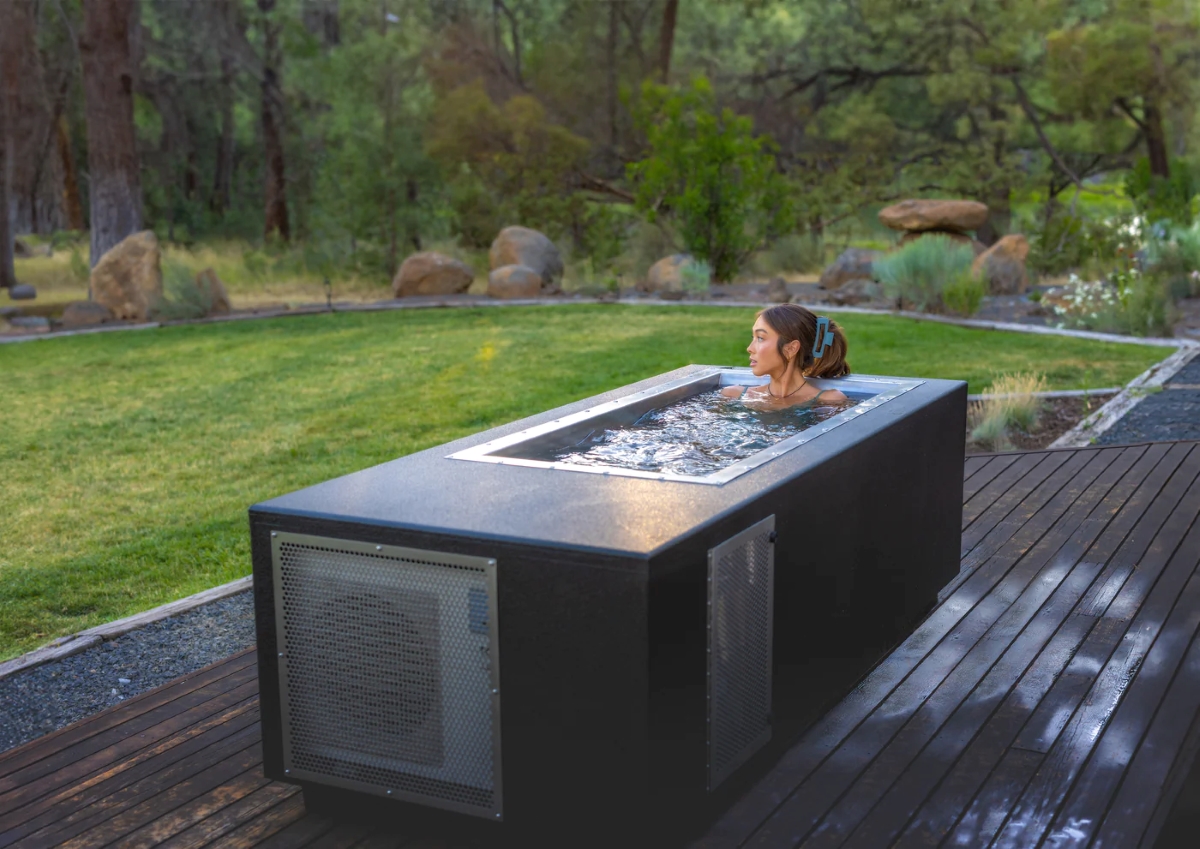
A plunge pool is another type of in-ground pool. However, unlike many in-ground pools that are heated, plunge pools are intentionally kept cold. They are designed to allow individuals to take a cooling dip after an intense workout or after spending time in a hot spa or sauna.
While this may sound like a new trend, plunge pools have actually been around for thousands of years. They were used by ancient Romans to cool off and were also featured in Chinese medicine. Since they’re not designed for swimming or playing, plunge pools are much smaller than many other options, making them a better fit for a smaller yard. For larger yards, a plunge pool could also be attached to a larger pool. Despite their smaller size, the cost to install a plunge pool is still significant, likely costing around $20,000 based on the national average.
7. Natural Pools
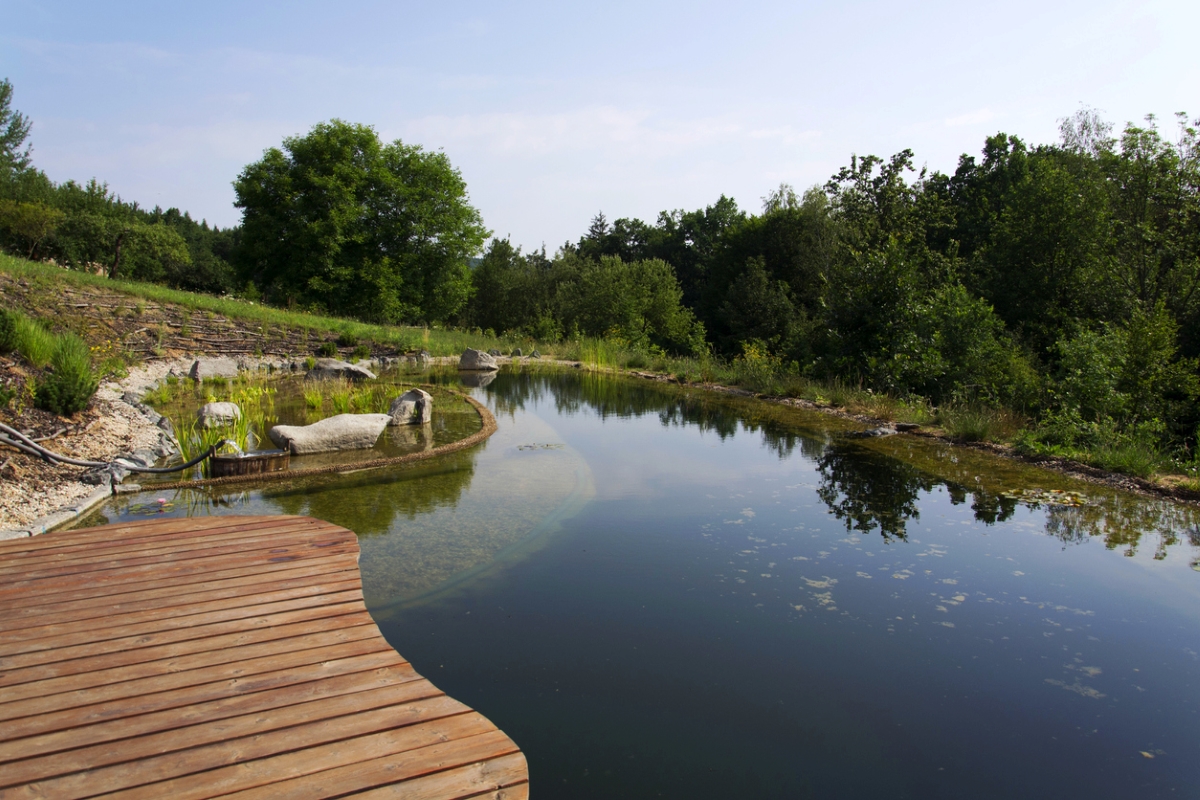
If you want a pool that is relaxing, chemical-free, and an attractive component to your yard’s landscaping, consider a natural pool. Unlike traditional pools that use chlorine to clean the water, natural pools offer a more, well, natural approach. They use plants to remove contaminants and clean the water for safe swimming. Duckweed, primroses, and other plants are paired with pumps to circulate the cleaned water through the pool.
One downside to consider is the space that is needed to accommodate a natural pool. Beyond the size of the pool you’ll want for swimming, you’ll also need extra space for the regeneration area where the water is cleaned. If you have the space, a natural pool can have lower maintenance costs than traditional models. However, they typically cost more to install. You should expect to spend a minimum of $50,000, but possibly $100,000 or more, for this pool type.
8. Swim Spas
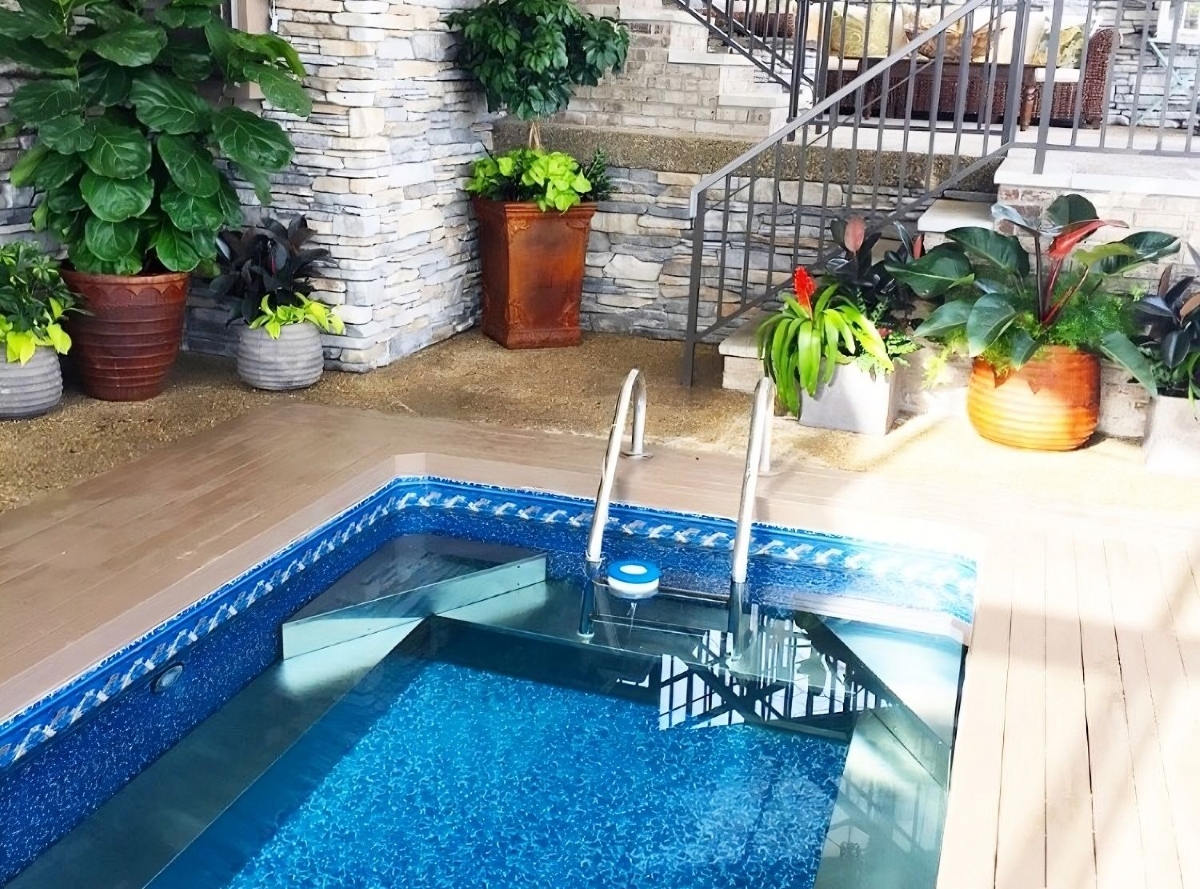
“Swim spas are a fun new category in swimming,” says Friedman. “They’re really an ‘all of the above’ option, with the hot water and jets of a hot tub and enough space to still swim and do water-based exercises,” he says. “Many of them also have infinity pool setups to allow actual lap swimming in a very small space.”
Also called a spool pool, a swim spa could be a suitable option for those who don’t have the space for a larger in-ground pool. They can often accommodate multiple people, but probably won’t be the best choice for families who want a pool for children to play in. Because of their smaller size, spools are also less expensive than larger in-ground pool options, with the national average installation cost being around $23,000.
9. Hot Tubs
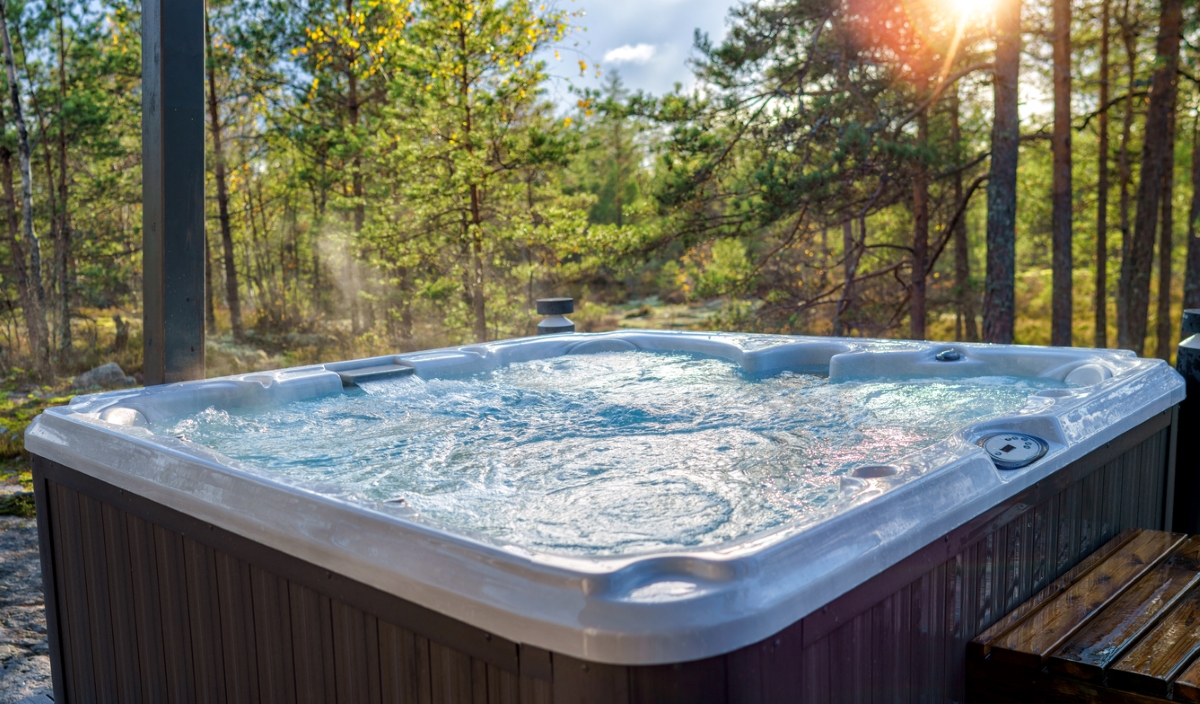
Hot tubs are a compact above-ground pool type. Their small size doesn’t offer space for splashing, playing, or swimming, however. Instead, these heated pools are used for hydrotherapy or relaxation. They have built-in seats and often feature massaging jets. People sometimes use the word “spa” to refer to a hot tub, however this isn’t technically correct. While both pool types are heated and offer similar massaging features, spas are in-ground pools.
While hot tubs can be very relaxing, it is important to remember that they aren’t safe for everyone. According to the CDC, children under the age of 5 should not use a hot tub. Similarly, pregnant women shouldn’t use one without first consulting with their doctor. Like any other pool types, it is also not advised to enter a hot tub if you have been drinking alcohol.

